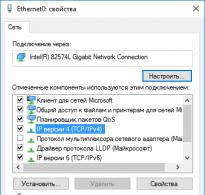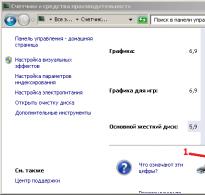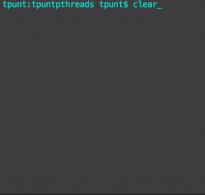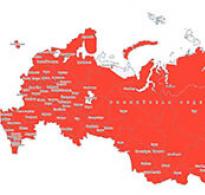Searching for files and folders in Windows XP. How to quickly find files, folders and search programs in Windows! Example of searching for a file or folder with files
The Windows XP operating system is one of the most popular and at the same time one of the longest-lived Windows systems. Although many computers now have newer versions of Windows, XP still lives on on second computers and laptops that contain photos and need to be searched for frequently.
Searching for photos in Windows XP can be done using the methods of the “Search” service available in this operating system. Although this service was not specifically created to search only photos, it can nevertheless be used very effectively for these purposes.
You can start searching for photos in Windows XP from any folder by clicking the “Search” button on the top panel of the Explorer window (Fig. 1), as well as from the “Start” menu in the lower left corner of the screen (Fig. 2).

Fig.1 Searching for photos in Windows XP is possible from any folder.

Fig.2 Searching for photos in Windows XP from the Start menu.
After clicking on the “Search” button in the top panel of Explorer, special settings for searching in Windows XP will appear on the left (Fig. 3). To quickly search for photo files of different types, you need to specify them correctly in the search settings.

Fig.3 Search settings in Windows XP.
Features of photo search in Windows XP
The first item in the search settings in Windows XP is “ Pictures, music or videos" Logically, it is suitable for searching photos, but not always. There is one feature in the Windows XP operating system that does not allow you to select this item to search for some types of digital photo files.
The thing is that when installing the Windows XP operating system on a computer, it does not know some types of graphic files, including some photo file formats, such as PSD, and DNG. The operating system does not recognize such files as images and ignores them when searching for the query “ Image Search».
In order to find photo files of all types on your computer, you need to left-click on the item “ files and folders" (). After this, new settings will appear on how to search. In the upper window you need to specify file extensions, and in the lower window the place to search for them (Fig. 4).

Fig.4 Search options for photo files in Windows XP.
If you need to search for several types of files at once, they must be entered after a semicolon, for example .jpg, dng, psd. You can write without spaces, but there must be a period before them. Otherwise, the search will be performed on all file types that have combinations of these letters in their names, as well as where the letters form file extensions.
Setting up photo search in Windows XP
To search for photos in any of the rare formats such as DNG, you just need to specify the file resolution and the location to search for them. After which they will be accurately found by the search service of the Windows XP operating system ().
If, when searching, you need to find photographs in the format, you must also specify the size of such files in the settings. This is one of the Windows XP search filters that helps narrow the search range (Fig. 5).

Fig.5 Selecting file sizes for searching photos in Windows XP.
In addition to JPEG photos, computers often store many other image files of the same format. These are usually files of different programs, which will also be found upon request. .jpg.
The easiest way to exclude graphic image files that are not photographs when searching for photos is their size. .jpg files in folders of different programs are usually small in size, since they are used for the official purposes of these programs and should not take up much space.
Digital photo files, on the other hand, are over a megabyte in size, which is necessary to preserve the quality of their image. A more precise size can be set in the search settings by specifying no less or no more any number in kilobytes ().
In order to search for photos in all subfolders, you need to check the required line in the additional search settings. In addition, you can also specify other search parameters there (Fig. 6).

Fig.6 Additional options for searching photos in Windows XP.
Sorting search results in Windows XP
After the search service in Windows XP finds all the files that were specified in the search settings, they will be displayed in the right window of Explorer. The left window will display information from the search results about the number of files found and your possible actions (Fig. 7).

Fig.7 Photo search results in Windows XP.
Now, to work with these files, you can sort them into different categories, such as: name, modification date, size, file type. In the left column of the Explorer window, you can specify one of these parameters in the corresponding search results line (Fig. 8).
In addition, in the right window of the Explorer window, you can also sort files by clicking on the name of the desired column. If you want even more categories to sort, you need to right-click in the line with the column names and select the desired categories (Fig. 8, 9).


Fig.9 Selecting additional categories for sorting.
Sorting the found files is necessary in order to clearly see possible areas for searching for photos. For example, sorting by date modified or created will show the dates of all available photos in ascending or descending order (if you click on the column header).
After sorting the found files into one of the categories in which you need to search for photos, all that remains is to narrow down their search. Go to the left window of Explorer and click the “Back” button. Add a new parameter to the search settings and repeat the refined search. Thus, the search area can be narrowed several times (Fig. 10).

Fig.10 Additional setting of the date of last changes.
For example, you found all photos with extensions .jpg, dng, psd, tiff and sorted them by date modified. Now, in order to select all photos from the found files, for a certain period you need to add this period in the search settings and repeat the search. After this, from the found files you can select, for example, files of the same name or the same size. There are many options for narrowing your search. Choose yours.
Viewing search results in Windows XP
After searching for specified photo files, you can quickly view their thumbnails here in the search results window. To do this, select the line “ Display search results differently", and then the item " Sketches" (). Or the same thing if you select the folder view icon on the top panel of Explorer ().
In order to quickly go to the folder of the found photo, you need to right-click on the file in the search results window and select the top line “ Open the folder containing the object"(Fig. 11).

Fig. 11 Go to the folder with the found photo.
If you delete a file from the search results window, it will be deleted from the folder where it is stored. The search service in Windows XP can quickly find, for example, all duplicate photos and immediately delete them. This is very convenient if photo files are stored in different folders.
If any of the found files were mistakenly deleted or moved from the search window, the Windows XP search service allows you to quickly return them to their place. To do this, you just need to press the key combination “Ctrl + Z”. Each subsequent press cancels the previous action.
You can read about searching for a photo on a computer, searching in other operating systems, and programs for searching photos on a computer in the following chapters:
How to find a file in Windows XP? For example, we will search for a Word file. Often, when working in the Word text editor, we create a lot of files and forget about them for a long time. But at one fine moment we suddenly need to find some document, but we don’t know where it is. There is neither time nor desire to search for such a file manually throughout the computer. And if we don’t even remember its name, then these searches are simply useless. We'll be wasting our time and energy. What to do in this case? This is what we will talk about now.
How to find a file in Windows XP

The most reasonable thing in such a situation is to use the system search. Every operating system has a search function, and it would be stupid not to use it.
Usually, by default, all Word text files are saved in the system folder " My Documents", but it's better to search your entire computer.
You can open any folder and search. I'll show you how to do this from the My Documents folder.
Open the folder " My Documents" Select the icon " Search».

If you do not have such an icon, then open the menu “ View» — « Browser Panels» — « Search».

In the box on the left where it says “ Part of the file name or the entire file name» write at least one word from the file name. If you don’t remember a single word, then don’t write anything.
Below where it says " Word or phrase in file» Write some keyword from your lost document. In the window " Search in:"Indicate the folder in which you saved it or simply indicate " Disk C:" (the search will go through the entire hard drive).
For example, I indicated in the search the word “ animals" You can narrow your search by specifying the approximate date the file was created. And be sure to specify the file type " DocumentWord" Click on the button " Find" Here's what we got:
We found all files that contain the word “inside or in the title.” animals" You can open them one by one and view them. When you find the file you need, grab it with the mouse and drag it (for example) to the Desktop. Or, look at what folder it is in (it’s written in the column Folder).
In the same way, you can search for any file. The main thing is to set the search parameters correctly. To do this, indicate in the field File type appropriate name. Try it. And you will succeed.
Video How to find a file in Windows XP.
- Hello Dmitry! They called one organization for help, I urgently needed to reinstall Windows XP Home Edition on one of the computers, but there was no distribution kit, and there were no backups either. It is impossible to install another Windows, since all the printers and scanners are old and only work with XP. I myself am a system administrator with six months of experience and have never installed such old Windows at all! Tell me, where can I download the original Windows XP without viruses and any pitfalls?
- Hello, I urgently need Windows XP Professional SP3 and I can’t download it anywhere. XP-ishka I need it to install the gameCall of Duty 4: Modern Warfare, this game is only available onXP and nothing else. I used to download everything to http://rutracker.org, but now the site does not open, a message appears - Access to the requested resource is limited by court decision.
- Hello! Tell me where I can download Windows XP from Microsoft? I understand that the operating system is quite old, but my professional sound card Creative SoundBlaster only works with XP. I surfed torrents myself, butRuTor.org was closed, but kinozal.tv does not open. Can you give me some advice?
Hi all! Despite the fact that the operating system is already 16 years old and is no longer supported by the developer, a huge number of people still use it. For example, in some small and even large organizations, software (in some cases even home-written) designed for Windows XP still works (and works well). As for ordinary people, someone left printers, scanners, cameras, cameras, TV tuners, computer games, professional sound cards, sewing, knitting machines (Wilcom, Brother, Toyota) and all this works only on Windows XP.
And now the operating system, for some reason, does not start, and the called computer technician cannot restore it, the question of reinstallation arisesXP. Of course, for serious work you need to download the original OS, because a pirated assembly raises serious doubts, it is unknown what functionality was cut from the distribution and whether the creator of the assembly had direct hands.
Download Windows XP on the search site for all torrent trackers on the RuNet - http://tparser.org
Let's go to a very convenient search site for all torrent trackers on the RuNet - http://tparser.org/
and enter in the input field:Microsoft Windows XP original distributions, then click on the button with the search image.
The service provides a list of torrent trackers that contain what we need. By the tracker icon (T) we see that the distribution we need is on the same RuTracker.org.
Select Windows XP Professional SP3 and click to the arrow button“Magnetize.”


Click on the button “Open the µTorrent application”

The µTorrent program opens and Windows XP Professional SP3 is downloaded to our computer.


Download Windows XP from RuTracker.org
You won’t just get to RuTracker.org now, since this site RuTracker.Org is blocked in the Russian Federation. To access only this torrent tracker, you need to install the “Access to RuTracker” browser extension. It provides access only to RuTracker.Org and does not in any way affect other network activity. Extension"Access to RuTracker"supported by Google Chrome, Mozilla FireFox, Opera, Yandex Browser browsers, as well as various clones of the first two. At the time of writing this article, an extension is being developed for the Safari browser. By going to the official website of the “Access to RuTracker” extension, link
http://dostup-rutracker.org/
We can select the desired browser and follow a direct link to go to the page for its free installation in the store of the selected browser.

The extension itself is a button on the browser toolbar with the simple task of enabling and disabling access to RuTracker.Org.

After installing the extension, go to RuTracker.org and register on it.
Enter “Microsoft Windows XP original distributions” in the search window and click on the “Search” button

Select the required hand and left-click on it.

Read all the necessary information and click on “Download.torrent”


The operating system is downloaded to your computer.

In exactly the same way, you can download Windows XP Home Edition.
When you use a computer for a long time, a huge amount of information can accumulate on it over time (we are talking about Windows) - various programs, files. It is not always possible to remember what is where, and for beginners it is also sometimes difficult to find the programs they need. In order not to manually climb through folders in search of the desired file or not to search for the necessary Windows programs and tools through a special control panel, you can use the built-in search and quickly find the information or program you need. In this article, I will show you how to search for the information and programs you need on computers with the Windows operating system installed (using Windows 7, Windows 8 and Windows 10 as an example).
In the article, I consider the 3 above systems as examples, since they are by far the most common. For example, Windows XP and Windows Vista have long been outdated and are used by a minimal percentage of users.
Search in Windows 7
In Windows 7, search is located in the Start menu and in all Explorer windows.
Let's first consider the most accessible search, which is the fastest to open - search in the Start menu. It's located at the very bottom of this menu:
Right there you just need to type the name of the desired file or program in whole or in part (just the beginning, for example) and Windows will try to find what you are looking for.
Example of program search
Let's say you want to find and run the Windows Uninstall Tool. In Windows 7 it is called "Add or Remove Programs".
To find this tool, in the search you just need to type “programs” (1) and after a few seconds a list will appear where you can already see the tool we need (2):
All you have to do is click on the search result and the desired program will open.
Also in this window you can see the “Programs and Features” and “Uninstall a Program” tools. It's all the same.
Example of searching for a file or folder with files
Let’s assume that on my “C:” drive in the “Documents” library there is a file with a work report called “Report for 2015”.
To find this file through the search, just type part of the name, for example “report” or “report”, and Windows will try to find everything that is with that name on your computer.
For example, I typed the query “otch” (1) into the search and my file (2) was found.
In Windows 7, you can quickly open the search tool using the keyboard shortcut: Win+F.
Search in Windows 8 and Windows 10
In Windows 8 and Windows 10, searching for information is no different in principle from what it was in Windows 7. The only difference is in the interface of the operating systems, since in new Windows it is quite different.
How to open and use search in Windows 8
Let's look at the search capabilities using Windows 8 as an example. There is also a search through the Start menu. The search button in this menu is located at the top right (magnifying glass icon).
Before searching for something, you can select a search area, namely, search in parameters, files, pictures or videos from the Internet, and also everywhere at once. To select an area, click the default area (1) and select the desired one from the list (2). If you don’t know where to look, put “Everywhere”, you will find most of everything.
For example, I want to find and open the Windows Control Panel. I selected the “Everywhere” area and entered “Control Panel”. The results appear below. What was found in Windows will be displayed in the very first options (1)?, before the line. After the dash there are options for searching via the Internet (3).
If you click on the search button (4) with a magnifying glass icon, a more detailed list of results will open, including search results for Internet sites.
Another option to open the search: while on your desktop, move your mouse cursor to the lower right corner and hold for a couple of seconds.
A panel will appear on the right, where you will see a search button at the top:
Everything works exactly the same. Let’s say you have a file somewhere on your computer called “List of Workers.” Having selected the search area (in the example “Everywhere” was selected), I enter part of the name, for example “list” (1). The results appear below, among which will be the file you are looking for (2), which can be immediately opened from this list.
In Windows 8, you can quickly open the search tool using the keyboard shortcut: Win+F.
How to open and use search in Windows 10
In Windows 10, search is located on the Windows taskbar by default:
Clicking this button will open a search window. In the bottom line (1) we indicate the search query. Let's say I want to find and open the Windows tool for removing programs from my computer, so I enter the "uninstall" part of the query (1) into the search bar. Search results will appear above, among which I see the one that suits me “Add or remove programs” (2).
You can select a search area by clicking on the default area:
From the list that opens, you can select a specific area of Windows to search, for example, search by photos, programs, documents, etc. If you want to search in all areas at once, select “All”.
Another search example. Suppose there is a “My Database” file somewhere on your computer. I enter part of the name into the search, for example “Base” (1) and in the results I get what I need (2).
In Windows 10, you can quickly open the search tool using the keyboard shortcut: Win + S.
Search through "Explorer" in Windows 7, 8, 10
It happens that there is no point in searching for a file throughout the computer, so as not to waste extra time, because searching for a file throughout the computer can take a long time, depending on the amount of information on the computer, and especially since you know approximately in which folder or on which This file can be located on your local disk. To do this, it’s easier to use a search in a separate folder or local drive, i.e. through the Windows Explorer program. Let's look at an example based on Windows 7.
In Windows 8 and 10, searching through Explorer is absolutely no different!
Search in Explorer is located at the top right (1). When you open a folder, the search bar will indicate where the search will be performed (where you are now). For example, now I have the “Program Files” folder (2) open.
Let's say I want to find the "Drivers" folder in the "Program Files" folder where I am now. To do this, in the search at the top right (1) I write “drivers” or you can enter the first few letters (in case you don’t remember the full name). The results will appear below (2).
All that remains is to open the desired file, folder or program directly from the search results!
It can also sometimes be useful to use a filter when searching, for example, to search for files, folders and programs by a certain size or modification date. When you enter the name of what you are looking for, the filter modes will appear below:
Let's look at another example...
Somewhere on my “C:” drive I have a file for work called “Publish on the site.” Knowing that the file is located on the “C:” drive, I need to open Windows Explorer, and then this local drive in it. In the search, I type the beginning of the file name “published” (1) and the system finds the file I need (2), indicating below its location on the computer.
Tip for finding files. When searching for files in Windows, you can search by file extensions. For example, if you want to find all files with the extension .txt, then type *.txt in the search. Where * will mean that files with any names will be searched, but with the extension .txt.
Conclusion
Use Windows Search to quickly open programs and files that you have located somewhere deep in Explorer. This way you will save time. And of course, you shouldn’t try to search for the required file or folder manually all over your computer for a long time, since first of all you should use a regular search.
Have a nice day and good mood! ;)






